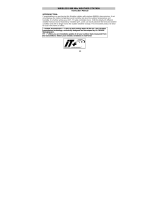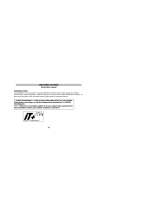50
Once the transmitter is successfully recognized by the Weather station, Channel 1 of the
Weather station will display the temperature data measured by internal sensor and Channel
2 will display the temperature estimated by the probe.
If the measuring probe is unplugged, the "probe channel" on Weather station (Channel 2)
will show "---", yet the data from the internal sensor will still be shown on Channel 1 .
The probe can be connected to the remote temperature transmitter anytime after initial
setup. There is no need to reset the units, should the probe be unplugged or re-plugged
again. The Weather station will automatically detect the temperature probe data and will
display the temperature data on Channel 2 after the probe is plugged.
SETTING UP:
When one transmitter is used:
1. First, insert the batteries into the transmitter (see “Install and replace batteries in
the Temperature transmitter” below).
2. Within 30 seconds of powering up the transmitter, insert the batteries to the Weather
Station (see “Install and replace batteries in the Weather Station” below). Once
the batteries are in place, all segments of the LCD will light up briefly. Then the
indoor temperature and the time as 0:00 will be displayed. If they are not shown on
LCD after 60 seconds, remove the batteries and wait for at least 60 seconds before
reinserting them. Once the indoor data is displayed, user may proceed to the next
step.

























